A Different Style of Beef Ribs
A steer has 13 ribs on each side. The get-go five ribs are institute in the beef chuck primal, the next 7 are in the beefiness rib primal and extend downward into the short plate primal, and the concluding rib is in the loin. Personally, I'm a huge fan of beefiness ribs and I like them more than pork. Even so, when talking about ribs, beef varieties oftentimes lead to the most confusion. The issue lies in the fact that they've been given and then many different names for the various ways in which they're divided. As a generalization, there are two master variations of beefiness ribs, brusk ribs and back ribs. Extending across that, there are different standards of the butcher as well as well equally regional differences and expectations. To illustrate, we'll look at short plate ribs: An entire plate rib section is made up of ribs 6 - 12. Ribs 9 - 12 (which are closer to the back) are not sold in a butcher example equally in that location is very petty lean meat and mostly fat. Meaning you're left with ribs 6 - 8 for the short plate. Brusk plate ribs tin so be cut differently - for example, between the basic is English language cut. If the ribs are cut across the basic, it'south called a Flanken cut. There are as well the ribs that remain in the chuck (ribs i - v) that are likewise referred to as short ribs - often these are labeled as "chuck" short ribs. If the ribs are left untrimmed, these ribs are referred to as "Dino ribs." If the plate short ribs are left in-tact, they're chosen "Brontosaurus ribs." You get the gist, at that place are a number of different methods of preparation as well equally unlike names given to these cuts. Short ribs tin come from two different places on the steer - the short plate and the beefiness chuck. Depending on where you're from and the standards of the butcher, the forequarter of the steer is separated between the fourth and 5th rib or the 5th and 6th rib. Subsequently which, you're left with a rib plate which tin be divided into the rib primal and brusque plate. The rib primal is where you get ribeye steak and beef back ribs. The short plate is the extension of the brisket. From the short plate we get sub-primal cuts like skirt steak as well as plate short ribs. You also accept the arm chuck which contains ribs one-5 to make beef chuck curt ribs. The ribs that come from the short plate are called either plate short ribs or simply short ribs; You may too encounter them called "loaded" beef ribs. Plate short ribs come from ribs vi, vii, and viii and are cutting just below the rib-eye every bit iii bone slabs. Over again, the reason ribs 9 - 12 aren't used is because there is very little lean meat and mostly fat; This meat is typically turned into ground beefiness. When plate brusque ribs are trimmed, they are cutting into ribs that are four-five" in length and often take the "lifter" or latissimus dorsi muscle removed from the serratus ventralis muscle. The serratus ventralis is the heavily marbled meat that sits below the fat seam and is the reason why beef plate brusk ribs are super tasty. When untrimmed and left in-tact, the whole rib is referred to as a "Brontosaurus rib." Meaning, y'all get the entire short plate section with both the lifter muscle on superlative as well as the serratus ventralis. Plate short ribs are great for smoking low and slow for barbecue. Chuck short ribs run from rib i to v and are cut simply above the brisket. The reason these basic are left in the chuck is because the bones are curt and practice not work well for steaks. Pregnant, the name chuck "short" ribs, are just that, short rib basic. Chuck brusque ribs are typically sold as 4 bone slabs, however, at a grocery shop you're more apt to come across them sliced up into atypical bones, called an "English Cutting" (pictured in a higher place). It's too not uncommon to see these sold flanken-way. All this ways is that the chuck ribs are sliced across the os as apposed to between the basic (English cut). When chuck short ribs are left in-tact and untrimmed, they're referred to every bit "Dino" beef ribs. For some reason a lot of folks prefer plate short ribs as apposed to chuck short ribs - still, I couldn't disagree more. Chuck brusk ribs are sourced betwixt the chuck and rib primals meaning they get characteristics from both areas. You go great marbling that's frequently associated with rib steaks (similar ribeye) likewise as the frontwards beefy flavors associated with chuck roast. Chuck brusque ribs are frequently braised rather than smoked. Where-every bit brusk plate ribs work well for smoking; Maybe that'southward the reason people prefer them? Beef dorsum ribs are sourced from the dorsal expanse of the steer. They come up from the rib primal after the ribeye musculus or rib roast (prime rib) has been removed. Beefiness ribs are different from short ribs in that the meat is plant between the basic (intercostal) as apposed to on summit of the bones. Beef back ribs don't really offer much in terms of meat but they make for a quick, like shooting fish in a barrel smoke for beginners. Not to mention, they're usually fairly cheap, even for ribeye meat. Be certain to check out my recipe for beefiness back ribs on a pellet grill. There are two chief ways that beef ribs are cut - they are either cut English fashion (betwixt the bones) or Flanken (across the bone). English cut but ways the ribs are cut into singular bones. The above is a rough interpretation of where the cuts would be made post-smoking. As pictured below, the chuck short ribs are sold English Cut and marketed as "Braising Beef." Flanken-cut, implies that the ribs were cutting beyond the bone. If the above short plate ribs were cut flanken, they would have 3, one inch rib basic. Nevertheless, short plate ribs are not often used for Flanken-fashion ribs. You lot're more than likely to see beef chuck ribs (ribs one-5) used - in which case they feature iv, i inch rib basic. About people associate "beef ribs" with low and irksome smoking temperatures (225 - 275F). Flanken-style ribs are meant to exist cooked the reverse - hot and fast (ideally 500F+). Flanken-cut ribs are pop in Korean barbecue where they're chosen Beef galbi or "Kalbi" which translates to ribs in Korean. On the West Coast of the USA, you may also run into these ribs called "LA manner" every bit they were popularized by Korean immigrants in Los Angeles. What are Beefiness Ribs?
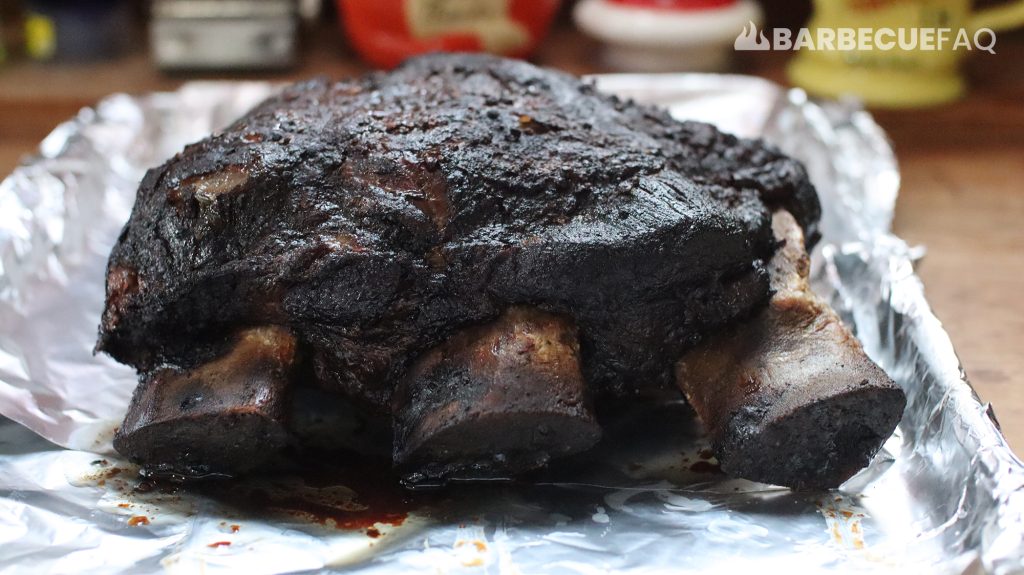
What are Short Ribs?
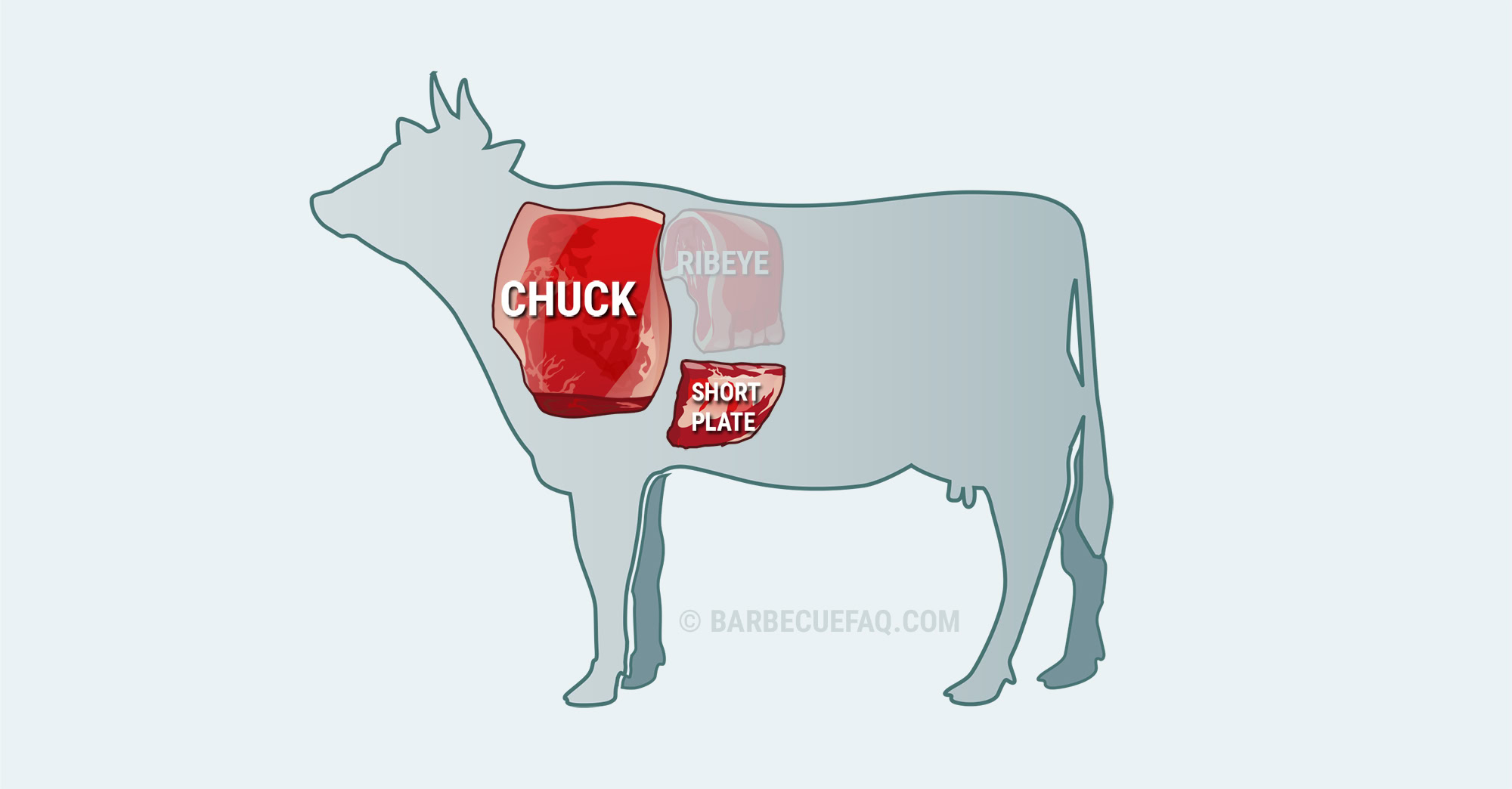
Plate Brusk Ribs
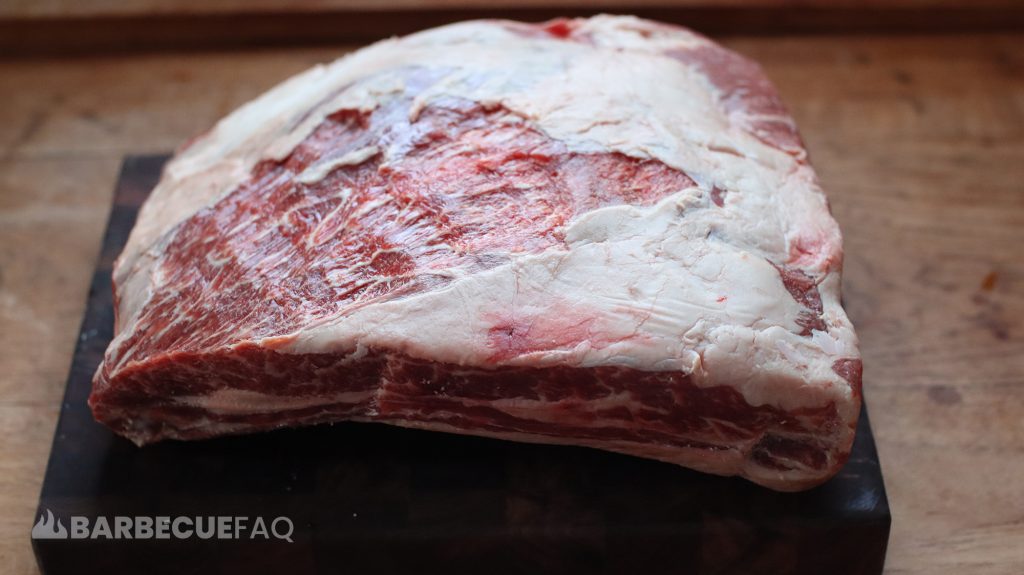
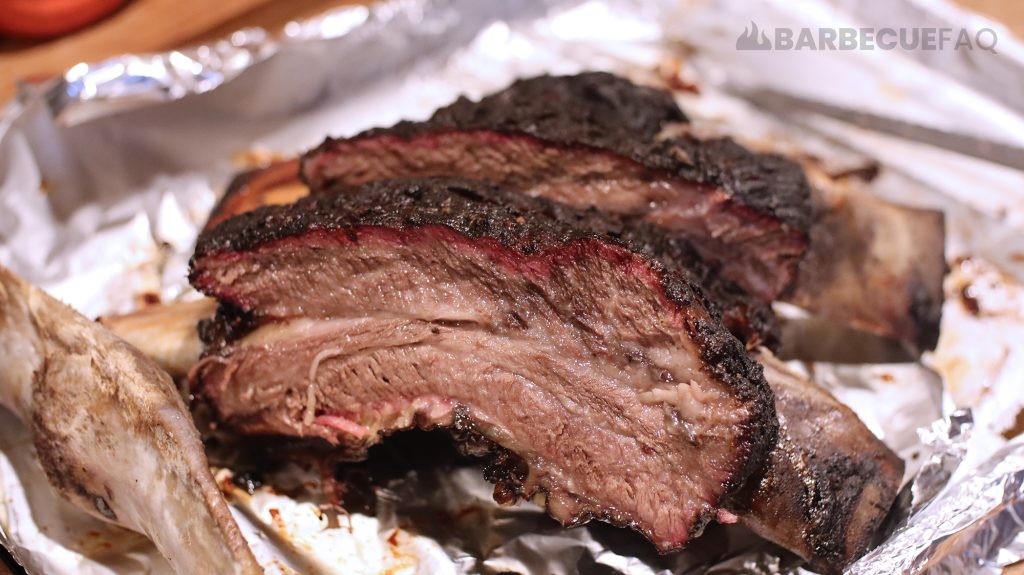
Chuck Short Ribs or "Dino" Beef Ribs
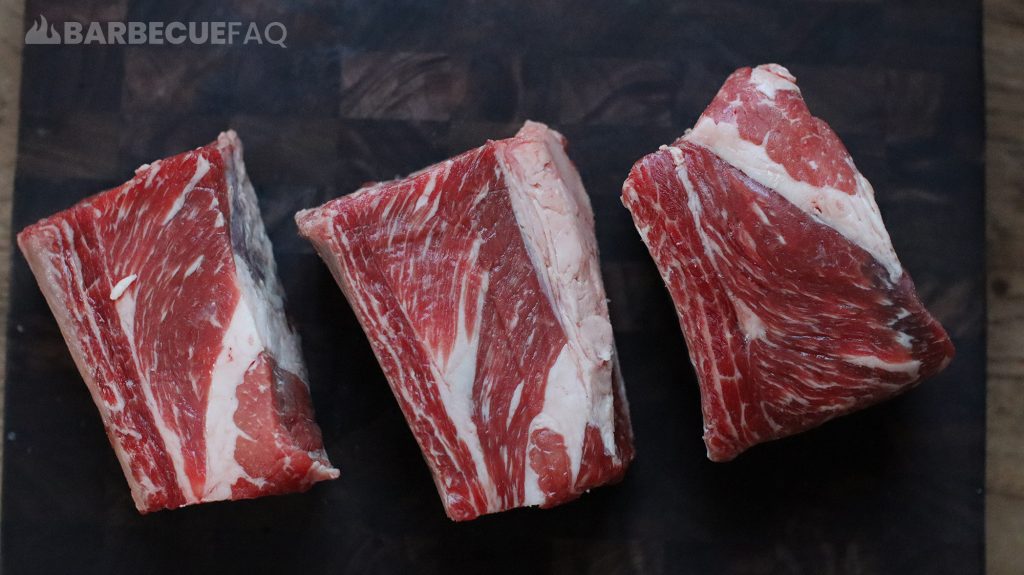
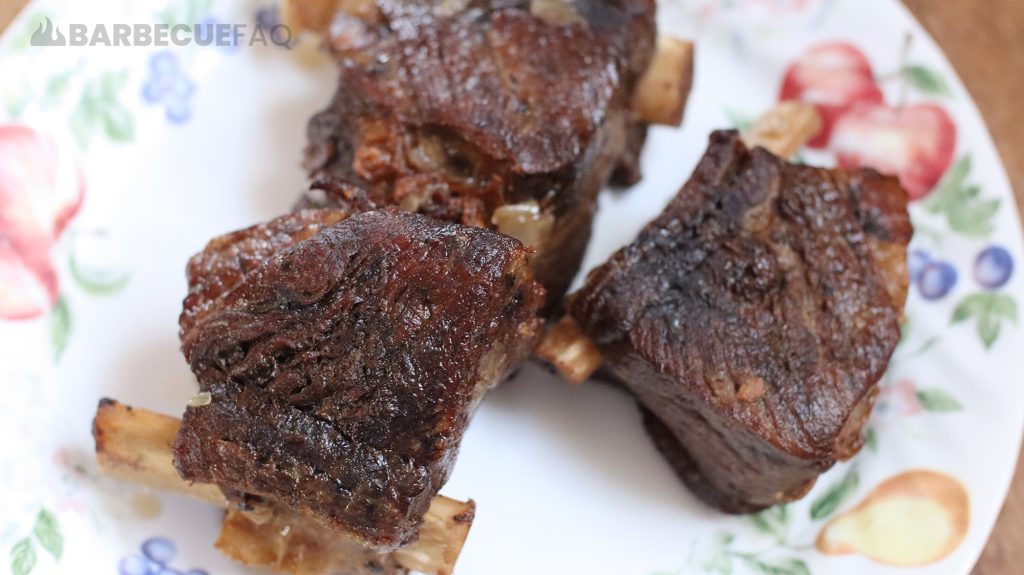
Beef Dorsum Ribs

Different Cut Styles for Beef Ribs
English Cut

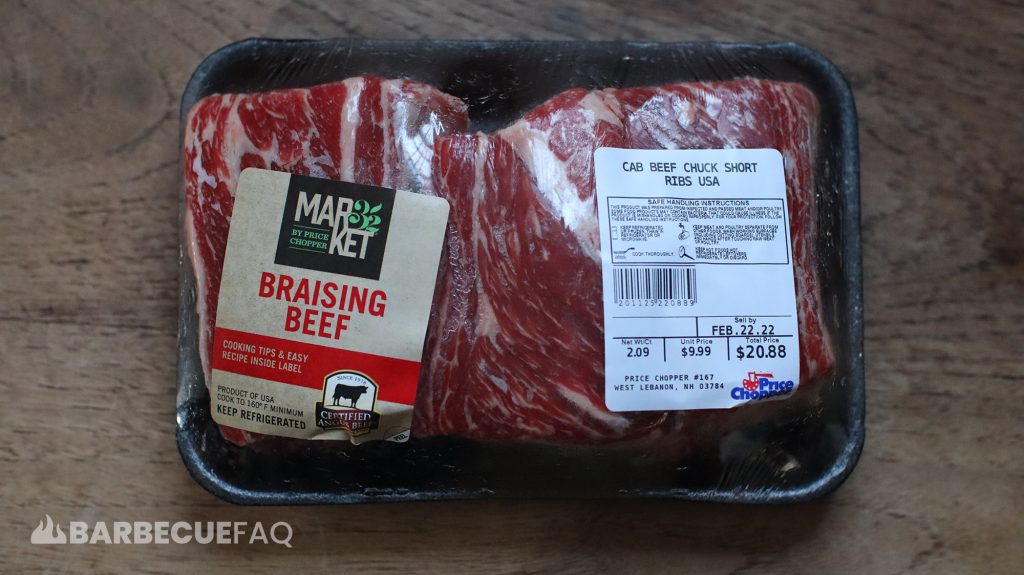
Flanken Cut

Source: https://barbecuefaq.com/types-of-ribs/beef/
0 Response to "A Different Style of Beef Ribs"
Post a Comment